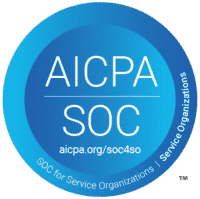Student ownership in education might lead to higher student motivation, involvement, and responsibility for the learning process. Accordingly, there is an increase in demand for products supporting student-led education, such as Portflow. However, can we expect students to take responsibility for their learning trajectory? More importantly, are students able to take this responsibility individually? A prerequisite for successful student-led education is matching guidance for the student towards student ownership. Scaffolding might be a promising solution herein.
The route to student ownership
Student ownership is the extent to which the student takes responsibility for their learning process. The student is in control. Based on insights into their capabilities, students individually shape the learning process to achieve the optimum (personal) learning results. Examples are letting the student decide on their subject for an assignment or internship, letting the student determine to follow classroom instructions, or allowing different deliverables types for a project assessment (e.g. video, website, prototype, report).
Student ownership is not an automatic result of providing freedom to the students. Students must be prepared to deal with this freedom to allow for learning. Learning skills are not self-evident, students’ brain areas that are in control of these skills are still developing. In addition, current skills education is often offered fragmented and offered in isolation, for example only in career-counselling sessions, which hinders the integration of skills to other courses, assignments, and their later careers. Skill education should be an integral part of the learning process. It is, therefore, necessary to focus on “learning to learn” to make student ownership in education feasible. Guidance in this learning process is a requirement for students to be successful.
Scaffolding
In its original terminology, scaffolding refers to “a temporary structure on the outside of a building used by workmen while building, repairing, or cleaning the building”. Meaning that the support is taken away when no longer needed. Similarly, in the learning process, scaffolding refers to the support provided to the student to perform a new skill, such as self-regulation. If the student has acquired new (procedural) knowledge over time, the scaffolding should adjust to the new situation. Scaffolding is thus defined as the temporary guidance of the student in performing a complex task to achieve a higher goal. Scaffolding helps students to convert a task that a student can perform with supervision (zone of proximal development) into a task that the student can perform independently. The student is guided to perform new, complex tasks individually. For example, when children learn to ride a bike they are first introduced to a bicycle with training wheels, which requires only limited balancing for the child. Once the training wheels are removed, a parent will often help the child keep balance while getting on and off the bike and slightly hold the bike when cycling. After more practice, the child manages to ride the bicycle independently and no longer needs support.
Scaffolding can be provided by a teacher, coach, a peer with experience in the field of the assignment/skill, an online tool or learning environment or a combination of all mentioned. 1-on-1 scaffolding by a teacher is most effective since it is dynamic and personal, but time-consuming and not scalable. Peer feedback is better scalable but dependent on fellow students’ capabilities. Scaffolding in an online learning environment or tool is most scalable, but must meet several requirements to achieve the desired result:
- Scaffolding is adaptive
The implemented scaffolds adapt to the student’s learning path, so it takes into account the prior knowledge and learning progress. This results in efficient and effective scaffolds, ensuring an initial balance between student regulation and support. Too much or little support might lead to demotivation in the student, which is detrimental to the student’s learning. Adaptive scaffolds are created based on data obtained in the tool (data-driven) or input from the teacher. - Scaffolding fades
As time progresses, scaffolding will decrease, allowing the learning process to reach a stage in which the student can perform a task independently. When the same amount of (external) support is provided continuously, students no longer have the opportunity to discover their learning, limiting learning progress. It is essential to constantly provide “just enough” guidance, which triggers thinking and promotes learning.
Scaffolding in Portflow
Currently, scaffolding in Portflow can be integrated using templates and authentic feedback. Students upload a template that is created by the teacher. By carefully choosing the level of detail for each template, a fading effect can be achieved. For instance, first-year students will receive a template which includes learning goals or objectives, collections and a connection between them (linking goals to collections). Students only need to focus on uploading evidence and connecting it to their collections and goals. In their second year, students again receive a template. However, the goals are not yet linked to collections and probably might not be defined. In the following year, the student does not receive a template and needs to structure the portfolio individually. Adaptiveness is achieved by forcing students to decide whether to upload the template to their portfolio. Additionally, teachers can formulate feedback to scaffold learning. This could be either achieved via a feedback request or by leaving comments on a collection or piece of evidence.
References
Azevedo, R. (2014). Multimedia Learning of Metacognitive Strategies. The Cambridge Handbook of Multimedia Learning, 647–672. https://doi.org/10.1017/cbo9781139547369.032
Blakemore, S. J., & Choudhury, S. (2006). Development of the adolescent brain: implications for executive function and social cognition. Journal of Child Psychology and Psychiatry, 47(3–4), 296–312. https://doi.org/10.1111/j.1469-7610.2006.01611.x
Jumaat, N. F., & Tasir, Z. (2014). Instructional Scaffolding in Online Learning Environment: A Meta-analysis. 2014 International Conference on Teaching and Learning in Computing and Engineering. https://doi.org/10.1109/latice.2014.22
Maij, D. (2019, November 19). Eigenaarschap, met behulp van gewoontevorming. Vernieuwenderwijs. https://www.vernieuwenderwijs.nl/eigenaarschap-met-behulp-van-gewoontevorming/
Vygotsky, L. S., Cole, M., John-Steiner, V., Scribner, S., & Souberman, E. (1978). Mind in Society: Development of Higher Psychological Processes. Amsterdam University Press.



